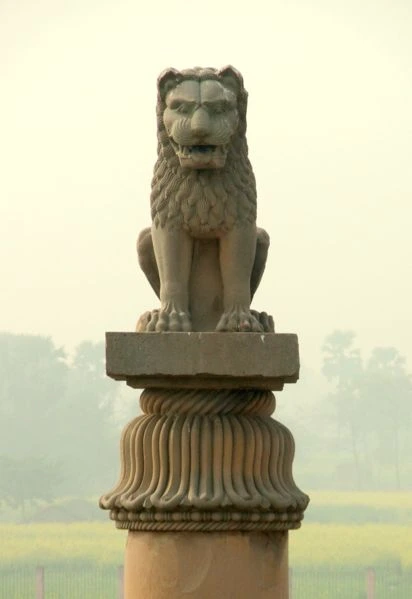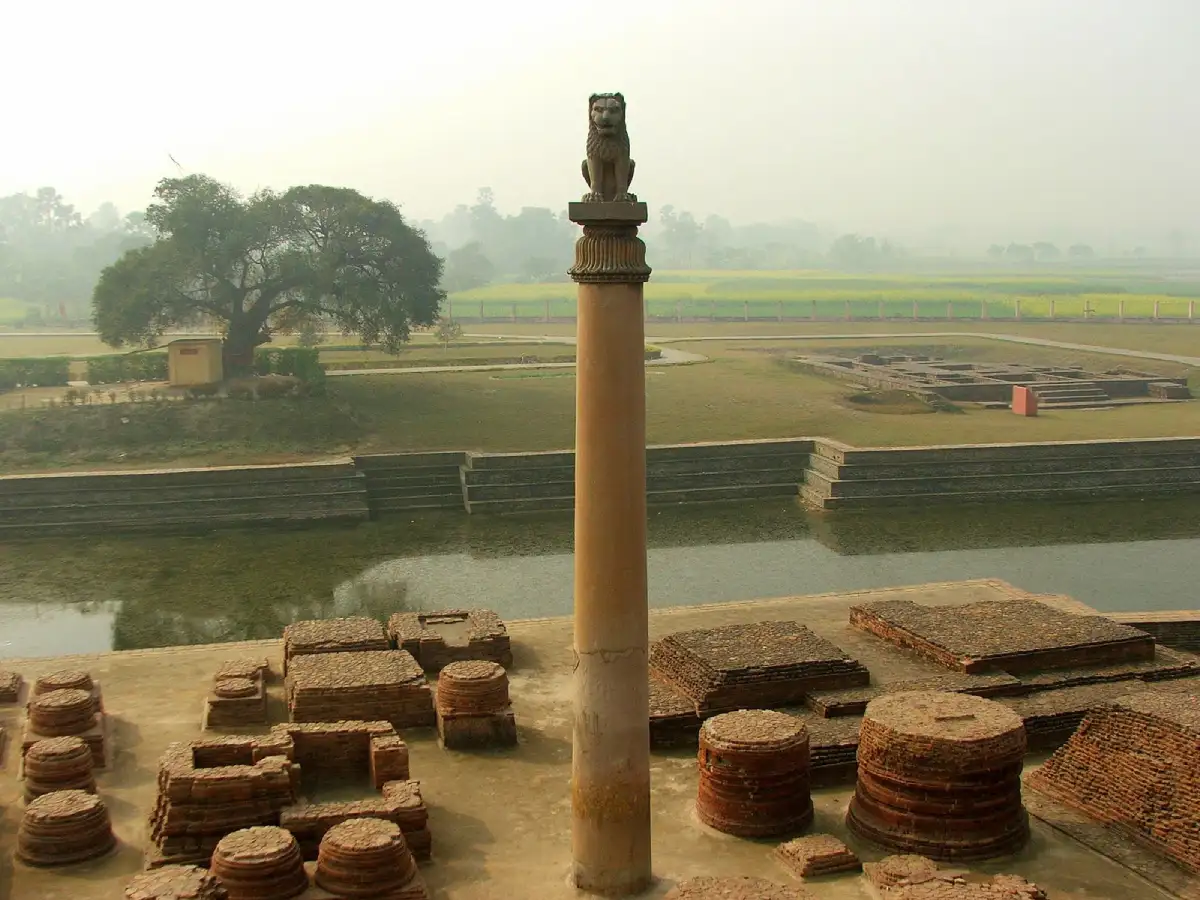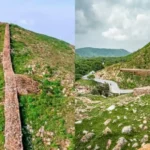The Ashoka Stupa, nestled in the historic town of Nalanda, holds a remarkable place in the annals of Buddhism and Indian heritage. With its origins dating back to the time of Emperor Ashoka, this stupa has weathered the winds of change and stands today as a testament to spiritual devotion and architectural brilliance. In this article, we delve into the captivating journey of the Ashoka Stupa, uncovering its history, design, cultural significance, and practical information for those eager to embark on a pilgrimage to this sacred site.
- The History of Ashoka Stupa
- Architecture and Design
- Rediscovery and Restoration
- Spiritual and Cultural Significance
- Surrounding Attractions
- How to Reach Ashoka Stupa
- Best Time to Visit
- Exploring Ashoka Stupa
- Immersive Cultural Experience
- Captivating Legends and Stories
- Photography Opportunities
- Preserving the Legacy
- Conclusion
- FAQs – Frequently Asked Questions
- Photo Gallery
The History of Ashoka Stupa
Emperor Ashoka, known for his conversion to Buddhism and tireless efforts in spreading its teachings, played a pivotal role in the construction of the Ashoka Stupa. Built in the 3rd century BCE, this stupa served as a focal point for Buddhist activities and as a repository for relics. It stood as a homage to Lord Buddha, commemorating his enlightened wisdom and profound impact on humanity. Its location in proximity to the illustrious Nalanda University further cemented its significance as a center of learning and spiritual growth.
Architecture and Design
The architectural marvel of the Ashoka Stupa is a testament to the artistry and engineering prowess of its time. The stupa’s hemispherical dome, crowned with an ornate pinnacle, captures the essence of Buddhist symbolism. Intricately carved gateways, or toranas, depict scenes from Buddha’s life and teachings, inviting devotees and visitors into a world of spiritual reflection. The stupa’s design transcends aesthetics, with each element imbued with profound meaning—a living tribute to the philosophy it represents.
Rediscovery and Restoration
Following centuries of obscurity, the Ashoka Stupa was rediscovered by archaeologists in the early 20th century. This rekindling of interest led to dedicated restoration efforts, aimed at preserving the stupa’s historical integrity. Meticulous work was undertaken to revive the stupa’s original grandeur, ensuring that future generations could connect with its rich past.
Spiritual and Cultural Significance
The Ashoka Stupa stands as a sacred pilgrimage site for Buddhists around the world. Devotees flock here to pay their respects and engage in spiritual practices, fostering a deep sense of inner peace and reflection. Beyond its religious importance, the stupa is a cultural gem, serving as a bridge between the past and present, and inviting individuals from all walks of life to explore its timeless wisdom.
Surrounding Attractions
Nalanda, a town steeped in history, offers visitors an array of attractions to complement their Ashoka Stupa experience. The ruins of Nalanda University, a UNESCO World Heritage Site, provide insights into ancient education and intellectual pursuits. The nearby Nalanda Archaeological Museum further enriches the journey, showcasing artifacts that shed light on the region’s glorious past.
How to Reach Ashoka Stupa
Traveling to Ashoka Stupa is a seamless endeavor, with various transportation options at your disposal. For those arriving by air, the nearest airport is located in Patna, followed by a scenic drive to Nalanda. Travelers opting for the rail network can disembark at the Bihar Sharif railway station, conveniently connecting to Nalanda. Roadways provide well-connected routes, ensuring a hassle-free journey.
Best Time to Visit
The weather and ambiance play a pivotal role in enhancing your Ashoka Stupa experience. The months of October to March offer pleasant weather, allowing you to explore the stupa and its surroundings comfortably. Additionally, the annual Rajgir Mahotsav, a cultural extravaganza, injects vibrancy into the atmosphere, making it an ideal time to immerse yourself in the local festivities.
Exploring Ashoka Stupa
Embarking on a journey of self-discovery at Ashoka Stupa can be tailored to your preferences. Guided tours offer insights into the stupa’s history and significance, providing a comprehensive understanding of its spiritual and cultural dimensions. Alternatively, solo exploration allows you to forge a personal connection with the stupa, delving into its stories at your own pace.
Immersive Cultural Experience
The charm of Ashoka Stupa extends beyond its physical attributes. Engaging with the local community adds a layer of authenticity to your visit. Participating in traditional rituals and ceremonies allows you to absorb the essence of the place, fostering a deeper connection with its heritage and spirituality.
Captivating Legends and Stories
The pages of history are adorned with captivating legends surrounding Ashoka Stupa. Folklore narrates tales of miracles and profound transformations occurring in its vicinity. These stories, passed down through generations, add an enchanting dimension to the stupa’s allure, infusing it with an aura of mystique.
Photography Opportunities
Photography enthusiasts are in for a treat at Ashoka Stupa. The play of light and shadow against the stupa’s intricate carvings creates a visual spectacle that is a delight to capture. The toranas, with their detailed sculptures, provide a canvas for artistic expression, enabling you to encapsulate the stupa’s essence in each frame.
Preserving the Legacy
Visitors to Ashoka Stupa play a crucial role in its preservation. While exploring, it is imperative to exercise respect and mindfulness, ensuring that the sanctity of the site is upheld. Responsible tourism practices, such as avoiding litter and adhering to designated pathways, contribute to the stupa’s sustained allure for generations to come.
Conclusion
The Ashoka Stupa stands as a living testament to a bygone era—a place where spirituality, history, and architecture converge. Its magnetic pull draws inquisitive minds and devoted souls alike, inviting them to partake in a journey of introspection and reverence. As you stand before the Ashoka Stupa, you become part of a timeless narrative, connecting with the echoes of centuries past and forging a link with the eternal teachings of Buddha.
FAQs – Frequently Asked Questions
The Ashoka Stupa holds immense spiritual and cultural significance as a symbol of Buddhist devotion and architectural splendor. It commemorates Lord Buddha’s teachings and plays a pivotal role in pilgrims’ spiritual journeys.
While visitors cannot enter the stupa itself, they can circumambulate it and explore the surrounding premises, absorbing the serene atmosphere and reflecting on its historical importance.
Yes, guided tours are available for those seeking a comprehensive understanding of Ashoka Stupa’s history, architectural features, and spiritual importance. Knowledgeable guides provide valuable insights.
Photography is generally allowed in the external areas of the stupa, including its intricate carvings and toranas. However, it’s advisable to respect any photography guidelines and refrain from using flash.
Ashoka Stupa is an integral part of local culture, attracting pilgrims and tourists alike. Festivals and events held in its vicinity celebrate the region’s heritage and provide a platform for cultural exchange and exploration.
Photo Gallery
















